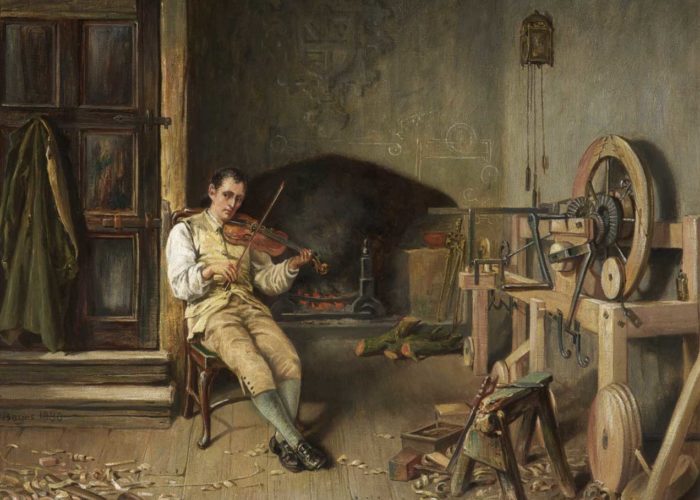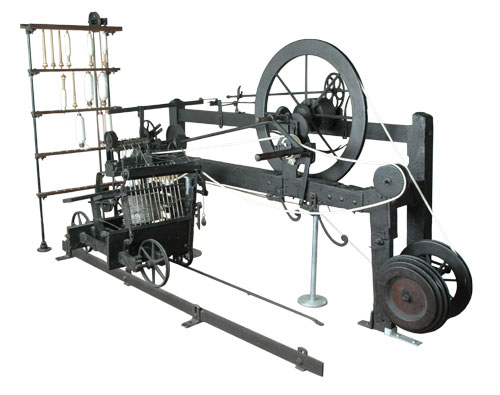Crompton’s spinning mule
Theme: The impact of industry, Economic and technological revolution, Medicine, science and the people
The spinning mule was invented by Samuel Crompton in 1779. It revolutionised textile production by vastly increasing the amount of cotton that could be spun at any one time. But this also meant textile manufacturers no longer needed to pay individual spinners to create spindles (wooden rods) wound with cotton thread, as just one operator could now use the machine to spin hundreds of spindles at once.
Samuel Crompton (1753 – 1827) was born in Bolton, Lancashire. When his father died, young Samuel helped to increase his family’s income by spinning – producing long, strong lengths of thread ready for sewing, knitting or to be woven into cloth. At this time, spinning was changing from a ‘cottage industry’, undertaken by families in their own homes, producing one spool at a time, to being an increasingly mechanised process of mass-production.
In 1764, James Hargreaves invented the ‘spinning Jenny’, which could produce eight spools of yarn at once. A year later, Richard Arkwright introduced a spinning frame powered by water and incorporating rollers to compress and stretch the yarns. Crompton’s spinning mule combined features of the moving carriage of the spinning Jenny with the Arkwright frame’s rollers. The machine could not only produce hundreds of spindles of yarn at once, but also yarns of different types and qualities.
But like many new inventions of the Age of Revolution, the spinning mule was so efficient, it threatened the livelihoods of the skilled workers of the cottage industries. Whole family incomes were lost as a result, leaving people destitute and hungry, and contributing to protests like the Luddite movement, where unemployed workers smashed machinery and set fire to mills and factories.
Crompton did not patent his design. It was soon being produced and adapted by others, and used on a massive industrial scale. By 1812, between 4 and 5 million mule spindles were in use, but Crompton received no royalties for the invention which could have made him extremely wealthy. The principles of his design continued to be used until the early 1980s.
Did you know..?
This machine was called a spinning ‘mule’ because it combined features of two machines. A mule is a cross between a horse and a donkey, and all three were widely used working animals of the time. A female donkey is called a ‘Jenny’.
Watch a video about this spinning mule here.
Use our Classroom resources to investigate this object and the Industrial Revolution further.
Highlights:
- Using objects, artworks and other sources to find out about the past
- Introducing the Age of Revolution
- How to make a revolutionary stop-frame animation
- Mystery objects
And much more…
Sources & acknowledgements
This object description and its related educational resources were researched and written by our team of historians and education specialists. For further information see the item’s home museum, gallery or archive, listed above.
-
Did you know..?
This machine was called a spinning ‘mule’ because it combined features of two machines. A mule is a cross between a horse and a donkey, and all three were widely used working animals of the time. A female donkey is called a ‘Jenny’.
-
Education overview
You can access a range of teachers resources related to this object and more on our education page.
Please also see our glossary of terms for more detailed explanations of the terms used.
-
Curatorial info
- Originating Museum: Bolton Library and Museum
- Production Date: 1802
- Creator: Samuel Crompton
- Original record
-
Use this image
You can download this image for personal and educational use but please take note of the license type and rights holder information.
- Rights Holder: Bolton Museum and Library
- License Type: All Rights Reserved







